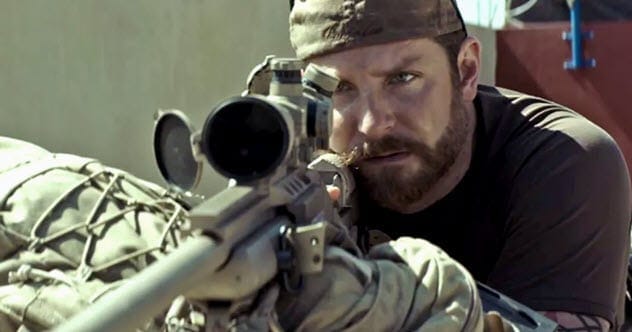War movies bring history and imagination to life, showcasing epic battles and compelling stories. A lot of work goes into making these films feel authentic and impactful.
Here are ten explosive facts that reveal some of the behind-the-scenes secrets of epic war movies.
War Horse
War Horse, coproduced by Steven Spielberg, received six Academy Award nominations. Based on a novel and play, the film relied on several horses to portray Joey. Spielberg, a longtime horse enthusiast, praised the animals’ unexpected contributions to the scenes.
Benedict Cumberbatch’s family history also added depth to the film, as his grandfather served as a submarine commander in both World Wars.
American Sniper
American Sniper, based on the life of Chris Kyle, the deadliest sniper in U.S. military history, was a box office hit. Chris Kyle wanted Clint Eastwood to direct a movie about his life. Eastwood directed and coproduced the film.
Bradley Cooper gained 40 pounds for the role, consuming 8,000 calories a day and working out intensely. He also wore Kyle’s shoes throughout the film and continued to wear them at home after filming ended.
Black Hawk Down
Ridley Scott’s Black Hawk Down depicts the 1993 U.S. military raid on Mogadishu. Despite winning two Oscars, the film faced criticism from the Somali Justice Advocacy Center, which felt Somalis were dehumanized.
Released after 9/11, the film reassured American audiences of their troops’ resilience after a surprise attack.
Full Metal Jacket
Stanley Kubrick’s Full Metal Jacket, known for its tagline, was shot entirely in England due to Kubrick’s fear of flying. A British Territorial Army base stood in for the Marine boot camp, and an abandoned gas works became Da Nang.
Kubrick found the film’s title while browsing a gun catalog, and a Belgian army colonel, a fan of the director, lent four M41 tanks for filming.
Inglourious Basterds
Quentin Tarantino’s Inglourious Basterds was his highest-grossing film upon release. Tarantino began writing the script in 1998 but shelved it until Jason Mraz’s music inspired him to finish it.
The film’s title is intentionally misspelled to differentiate it from the 1974 war film, The Inglorious Bastards. Adam Sandler was considered for a role but had to decline due to other commitments.
Dunkirk
Christopher Nolan’s Dunkirk portrays the Dunkirk evacuation during World War II. To maintain authenticity, filming took place in Dunkirk, France, where the actual event occurred. Nolan reconditioned warships and used cardboard cutouts and extras instead of CGI.
Harry Styles’s presence on set caused disruptions as fans frequently invaded the set to see him.
Apocalypse Now
Francis Ford Coppola’s Apocalypse Now, starring Marlon Brando and Robert Duvall, is now considered one of the best films ever made. George Lucas was initially set to direct but passed the project to Coppola due to other commitments.
To enhance realism, the props manager sourced human cadavers, which he obtained by robbing cemeteries. Additionally, a water buffalo slaughter filmed on location sparked controversy with animal rights groups.
The Thin Red Line
Terrence Malick’s The Thin Red Line, marked his return to directing after 20 years and featured a star-studded cast. Jim Caviezel secured the lead role, which was highly sought after by other actors, including Johnny Depp.
Malick’s lengthy casting process was driven by his desire for authenticity, preferring to cast actors that would immerse fans in the characters rather than just draw attention to their fame.
Midway (1976)
The original Midway, released in 1976, starred Charlton Heston and Henry Fonda. The film used Sensurround technology to enhance the battle scenes, creating a rumbling effect in theaters. Battle scenes consisted of recycled footage from other war movies.
Several members of the cast, including Fonda and Heston, were World War II veterans.
1917
1917, inspired by director Sam Mendes’s grandfather’s experiences in World War I, required the construction of almost 1 mile of trenches. The crew faced technical difficulties, including a cigarette lighter that wouldn’t ignite, wasting an entire day of filming.
Adding to the discomfort, some extras relieved themselves near a tree where the film’s star, George MacKay, had to sit during the final scene.
These facts highlight the dedication and challenges involved in creating memorable war films. From historical accuracy to unexpected on-set incidents, the making of these movies is often as dramatic as the stories they tell.
Which of these facts surprised you the most? Leave your comment below!










